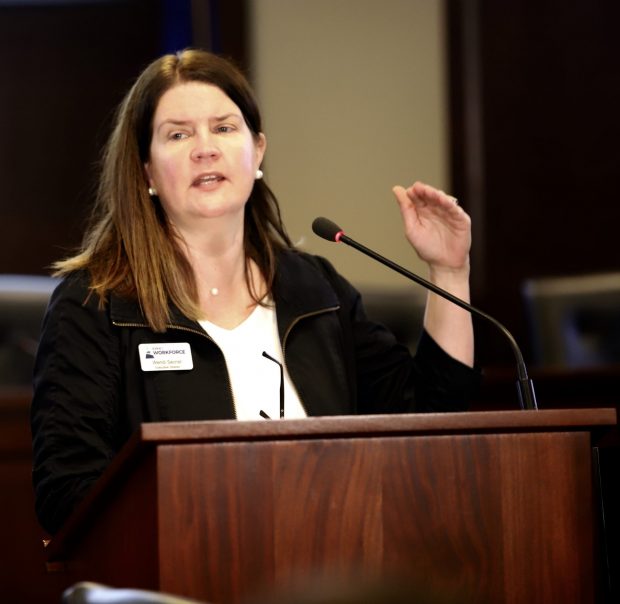The numbers are fluid, but there are early signs that Idaho Launch is connecting with a new group of high school graduates.

Many of this year’s Launch applicants are high school seniors with grade-point averages that fall below the statewide mean of 2.9. That suggests the fledgling program is drawing interest from students who have not seen themselves as “go-on material,” Workforce Development Council executive director Wendi Secrist told legislators Wednesday morning.
This is the first year for Launch, which provides high school graduates with up to $8,000 for college or career training. The program is designed to encourage graduates to pursue in-demand careers, from nursing and teaching to welding and auto repair. Supporters also hope the program will improve Idaho’s chronically low college “go-on” rates; a year ago, only 43% of high school graduates continued their education.
Secrist provided the Launch update to the Joint Finance-Appropriations Committee, the powerful House-Senate panel that writes up all state budget bills. JFAC this year supported a $70.8 million Launch budget, which skated through a Legislature divided along ideological lines.
That same split was evident during JFAC’s hearing Wednesday.
Rep. Josh Tanner, R-Eagle, a Launch opponent, wondered why the state is rewarding high school graduates with lackluster grades. “I don’t want to continue to pay for them to go on.”
Tanner drew a sharp retort from Senate Education Committee Chairman Dave Lent, a vocal Launch supporter.
“Not all students are A students. In fact, most students are not,” said Lent, R-Idaho Falls. “If we are not going to provide a pathway for a C-plus student … we are going to be paying for it for many years to come.”
Legislators did not attach a GPA requirement to Launch. Recipients must graduate from high school and complete a state-required career pathways plan. Recipients must then sign up for college classes or job training aligned with an in-demand career, as defined by the Workforce Development Council.
Reader Resource: Check out our guide to Idaho scholarships.
The state will award about 9,250 Launch grants this year, Secrist said Wednesday.
Most Launch recipients will put their money toward college, as opposed to career-technical programs or apprenticeships.
So far, nearly 5,900 seniors have said they plan to use their Launch money at one of Idaho’s two- or four-year colleges. “(It’s) a pretty significant number of students,” State Board of Education executive director Matt Freeman told JFAC.
In the fall of 2023 — when Launch was not yet on the books — about 6,500 graduates enrolled in one of Idaho’s public colleges and universities.
Those numbers suggest a possible campus enrollment spike next school year. However, state officials won’t know until fall if Launch is placing a strain on the colleges and universities, especially in popular Launch-eligible programs such as nursing, Freeman said Wednesday.
JFAC is meeting in Boise through Thursday, and is touring the College of Western Idaho’s Nampa campus Wednesday afternoon.
